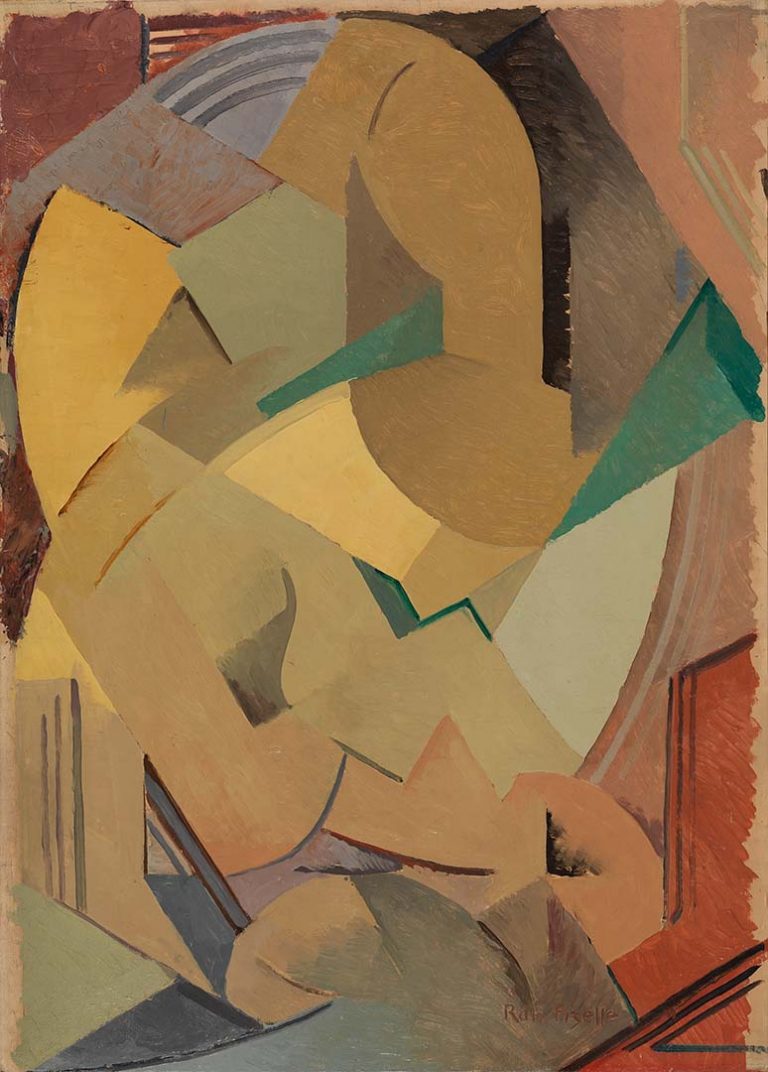We acknowledge the Traditional Owners of the land on which the Queensland Art Gallery | Gallery of Modern Art stands and recognise the creative contribution First Australians make to the art and culture of this country.

Rah Fizelle / Australia 1891–1964 / Construction II c.1939 / Oil on board / 91 × 65cm / Purchased 2012 with funds from Philip Bacon AM through the Queensland Art Gallery Foundation / Collection: Queensland Art Gallery | Gallery of Modern Art / © Rah Fizelle
Rah FizelleConstruction II c.1939
On Display: QAG, Gallery 12
Rah Fizelle’s Construction II shows his embrace of cubist methods of the early twentieth century. Fizelle said he never really understood Cubism, but the structural basis of cubist works, combined with his study of the Renaissance, is evident in this painting, in which he has replaced solid forms with two-dimensional geometric designs.
This impressive work is a highly ordered arrangement of warm and cool hues, distributed across geometric planes from which emerge the figure of a seated woman. Fizelle’s most important major paintings of this period are similarly Cubism-inspired half-figures of women. Its composition owes much to the influence of Grace Crowley and her studies in France under André Lhote and Albert Gleizes.
Rah Fizelle drew and painted from an early age, but it was not until his discharge from war service in 1919 that he had the opportunity to take a special course in art at Sydney Teachers’ College. A scholarship to the Ashton School of Art allowed him to continue studying during the 1920s, sparking his interest in Cubism.
After a period of study and travel in Europe between 1927 and 1931, his ideas on composition and the solidity of form benefited from the teaching of Bernard Meninsky, Walter Bayes and Frank Medworth at the Westminster Art School in London. Fizelle then returned to Sydney, where he became a teacher and advocate of Modernism. From 1932 to 1937, he conducted an art school with Grace Crowley in Sydney based on the principles of Modernism. Through their promotion of modern art, and Cubism in particular, they influenced a number of artists in Sydney.
Rah Fizelle was one of the pioneers of abstract art in Sydney during the 1930s and 40s. During this highly creative period, he evolved a consistent and refined style based on semi-abstract figure compositions.
Discussion Questions
Many artists throughout history have selected a seated woman as their subject. Why do you think this is so?
Classroom Activities
Fizelle has used a warm colour palette and soft-edged shapes to portray his seated woman. Digitally manipulate the colour balance of Fizelle’s painting in Photoshop to produce a version with a cool colour palette. Use this palette to paint an assortment of geometric and curved cut outs. Create your own seated woman by arranging, overlapping and rotating the shapes.